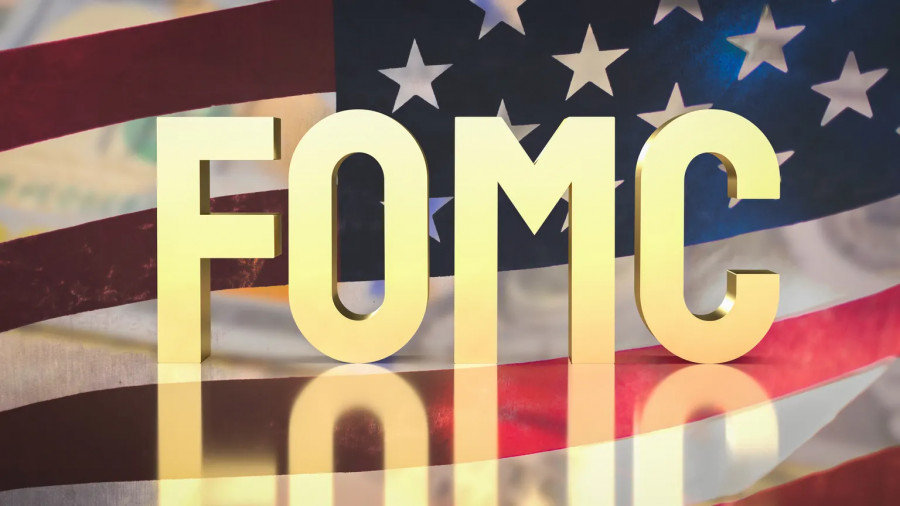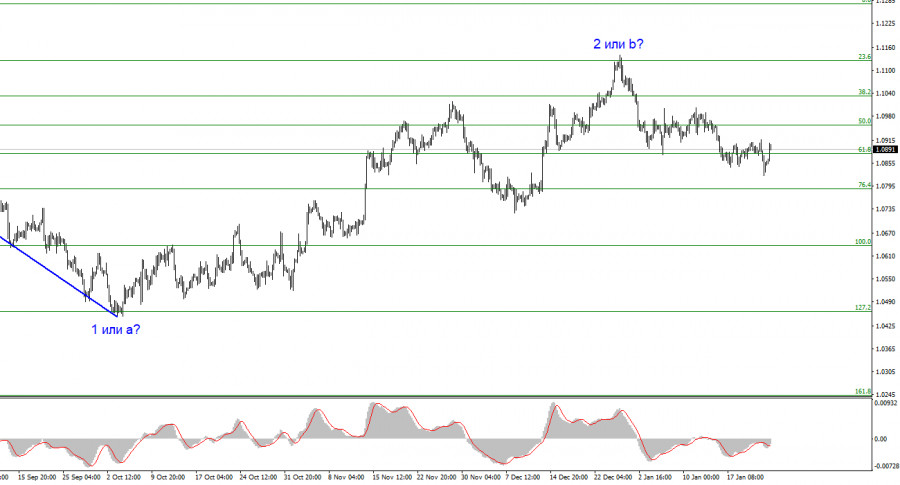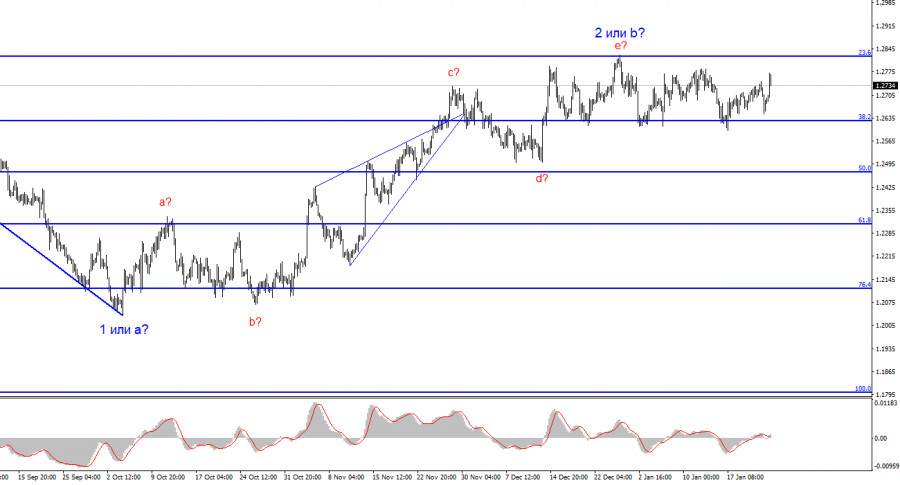
In my recent reviews, I have repeatedly written about the interest rates in the United States. Personally, I came to the conclusion that there would be no rate cut in January or March. I made this prediction at the beginning of the year, and since then, the market has started to change its own opinion. Initially, there was an 80% probability of an FOMC rate cut in March. Currently, it stands at around 40%. I can't say that I was completely right, as no one knows what could happen to inflation before the March meeting, but so far, I made the right prediction.
Undoubtedly, if inflation sharply falls below 3% by the end of February, the Monetary Policy Committee will consider the option of lowering the interest rate. However, I believe that inflation should come close to the 2.5% mark, and only then will the FOMC seriously consider rate cuts. Inflation accelerated to 3.4% in January, so it is unlikely to drop to 2.5% by the end of February.

However, former member of the Monetary Policy Committee and former president of the St. Louis Federal Reserve, James Bullard, believes that the U.S. central bank could start lowering rates as early as March. Bullard believes that the central bank will not wait for the 2% threshold to be reached because by then, it will be too late to start easing. He believes that U.S. inflation could drop to 2% by the third quarter of this year, and the Fed does not want to be in a situation where it has to lower rates sharply and quickly.
If inflation is somewhere between 2% and 2.5% "and you still haven't moved the policy rate, then you might have to move very aggressively, with 50 basis points at a meeting or something, and that would be a difficult thing," said Bullard. I can say that I agree with the former head of the Fed, but at the same time, I would like to emphasize that inflation is currently at 3.4%. There is no guarantee that it will decrease as Bullard envisions. If inflation drops to 2.5%, then we can expect a rate cut at the next meeting, but that moment is still very far away. My forecast remains unchanged – we will not see a rate cut in March.
Based on the analysis, I conclude that a bearish wave pattern is being formed. Wave 2 or b appears to be complete, so I expect an impulsive descending wave 3 or c to form with a significant decline in the instrument. The failed attempt to break through the 1.1125 level, which corresponds to the 23.6% Fibonacci retracement, suggests that the market is prepared to sell over a month ago. I will only consider short positions with targets near the level of 1.0462, which corresponds to 127.2% Fibonacci.

The wave pattern for the GBP/USD pair suggests a decline. At this time, I am considering selling the instrument with targets below the 1.2039 mark because wave 2 or b will eventually end, and could do so at any moment. However, since we are currently observing a flat pattern, I wouldn't rush to short positions at this time. Since the movement has been horizontal for a month now, I would wait for a successful attempt to break below the 1.2627 level in order to have more confidence in the instrument's decline.
The material has been provided by InstaForex Company - www.instaforex.comfrom Forex analysis review https://ift.tt/aYVKlxM
via IFTTT
